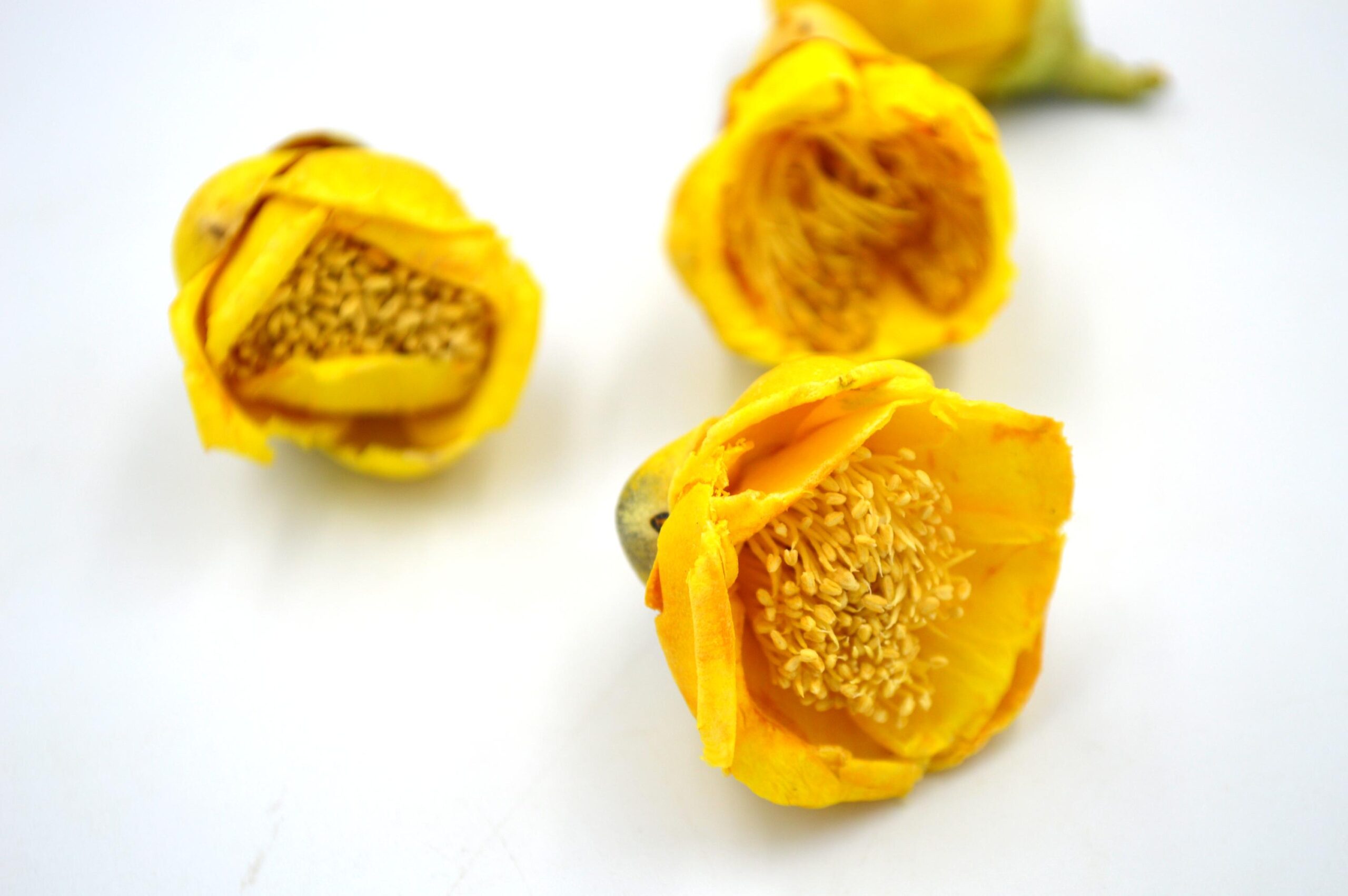Description
Origin: Fangcheng, Guangxi Province
Harvest: 2021 October Tea tree flowers from wild tea trees
Harvest: 2021 October Tea tree flowers from wild tea trees
Latin Name: Camellia nitidissima C. W. Chi
Direction:
use glass or porcelain teawares to brew 7 rounds at 100℃, tea:water 1:40
- dry tea tree flower is lustrous fresh golden yellow color
- tea soup golden yellow, clear and brilliant
- the aroma is clean and high, brisk and flowery fragrances
- the taste is fresh and mellow, sweet and brisk, strong sweet aftertaste
- wet tea flower is golden yellow, whole flush, fresh and lustrous, tender
Introduction:
The flowers of golden camellia are golden yellow, dazzling, as if coated with a layer of wax, glittering and translucent. Camellia is solitary in leaf axils. When the flowers bloom, they are cup-shaped, pot shaped or bowl shaped, charming and elegant. Camellia is non-toxic, contains more than 400 kinds of nutrients, non-toxic side effects. Rich in tea polysaccharides, tea polyphenols, total saponins, total flavonoids, tea pigments, protein, vitamin B1, B2, vitamin C, vitamin E, folic acid, fatty acid, B-carotene and other natural nutrients; Camellia contains dozens of amino acids such as theanine and threonine, as well as trace elements such as natural organic germanium (GE), selenium (SE), molybdenum (MO), zinc (Zn), vanadium (V), and macro elements such as potassium (k), calcium (CA), magnesium (mg), which have important health care effects on human body. Jinhua tea has a unique and magical effect on lowering blood sugar, blood pressure, blood lipid and cholesterol, and on diabetes and its complications, playing a synergistic and balanced regulating role.






![DSC_1237[1]](https://i0.wp.com/shop.liu-tea-art.com/wp-content/uploads/2022/06/DSC_12371-scaled.jpg?fit=2560%2C1702&ssl=1)




















